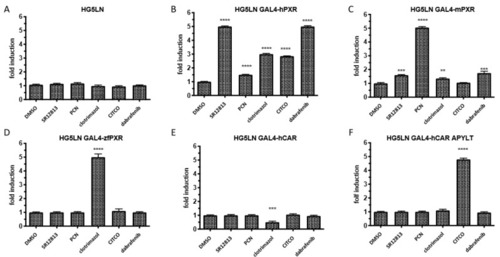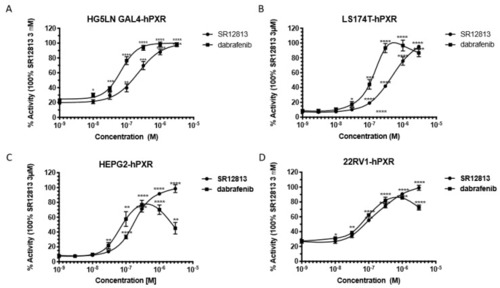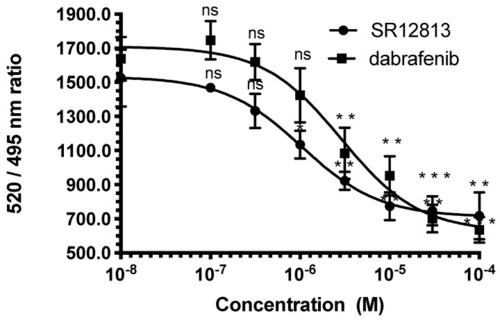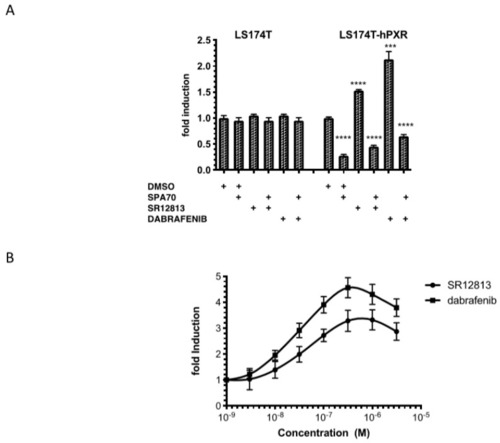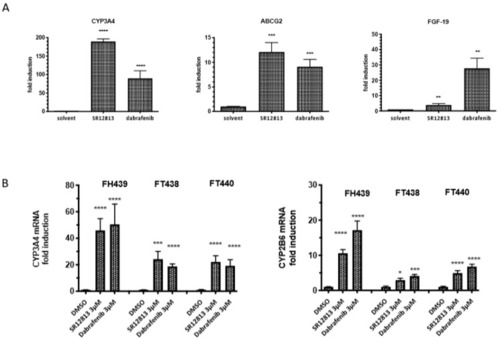- Title
-
The Anti-Cancer Drug Dabrafenib Is a Potent Activator of the Human Pregnane X Receptor
- Authors
- Creusot, N., Gassiot, M., Alaterre, E., Chiavarina, B., Grimaldi, M., Boulahtouf, A., Toporova, L., Gerbal-Chaloin, S., Daujat-Chavanieu, M., Matheux, A., Rahmani, R., Gongora, C., Evrard, A., Pourquier, P., Balaguer, P.
- Source
- Full text @ Cells
|
Effects of dabrafenib on the activation of human, mouse and zebrafish pregnane X receptor (PXR) and human constitutive androstane receptor (CAR) nuclear receptors as measured by luciferase reporter assay. Activation has been measured in ( |
|
Dabrafenib is a potent activator of hPXR on different human cancer cell lines. Results of luciferase assays showing dose–response curves for SR12813 and dabrafenib in ( |
|
Dabrafenib binds to hPXR. Inhibition of FRET between fluorescein-labeled PXR ligand and recombinant GST-hPXR by SR12813 or dabrafenib. Results are expressed as the signal from the fluorescein emission divided by the terbium signal to provide a TR-FRET emission ratio. Data are the mean (±sd) from three independent experiments, *** |
|
Effects of dabrafenib and SR12813 on the proliferation of LS174T-hPXR cells. ( |
|
Effects of dabrafenib on hPXR target genes expression in LS174T-hPXR cells and in primary human hepatocytes. ( |

